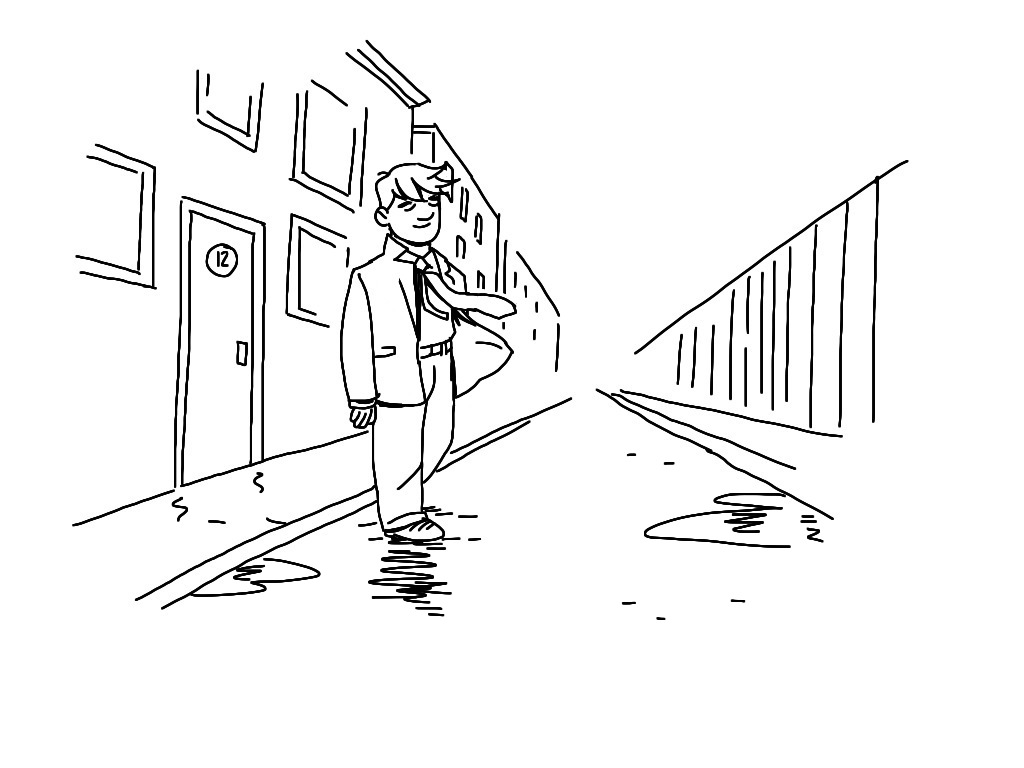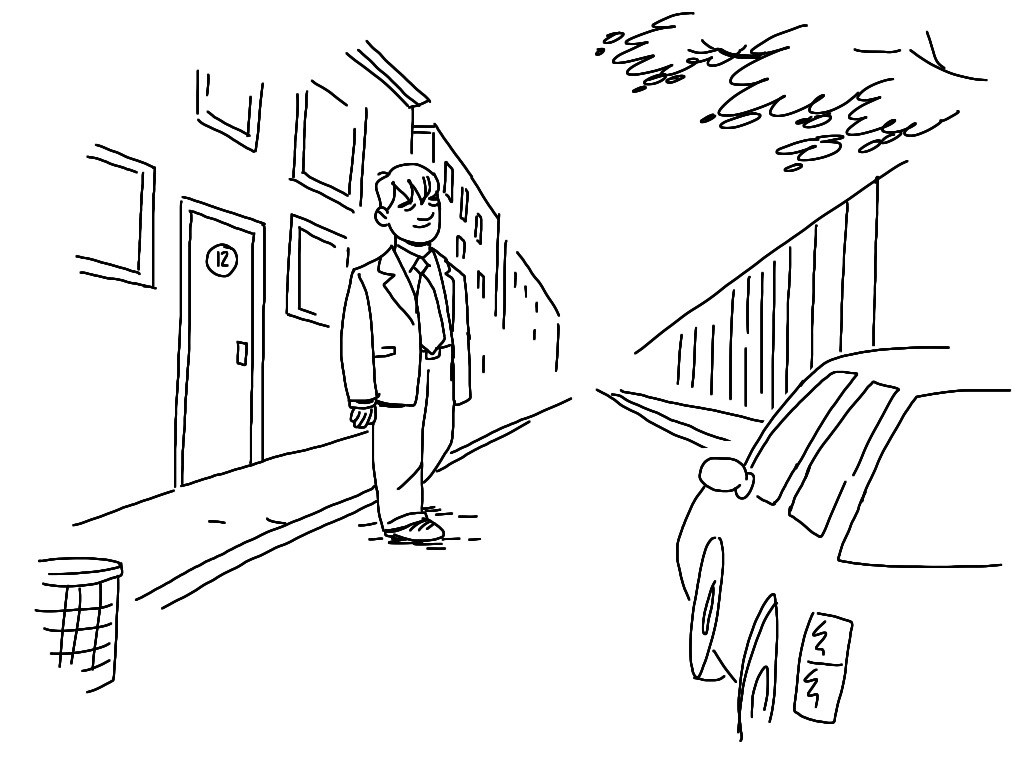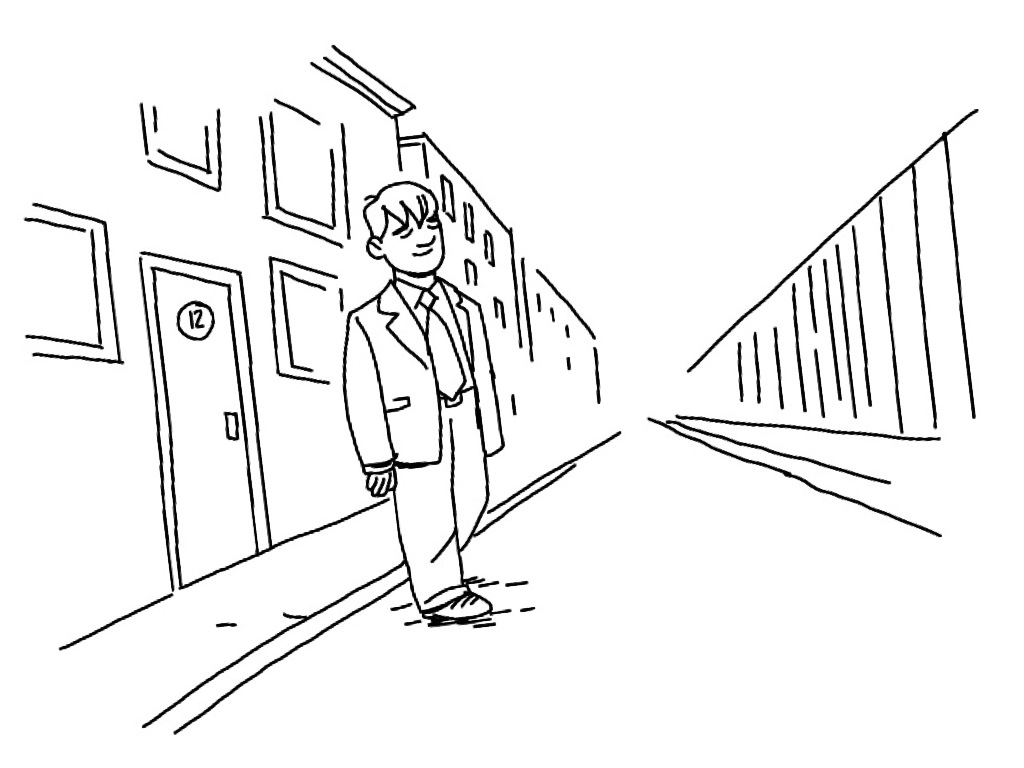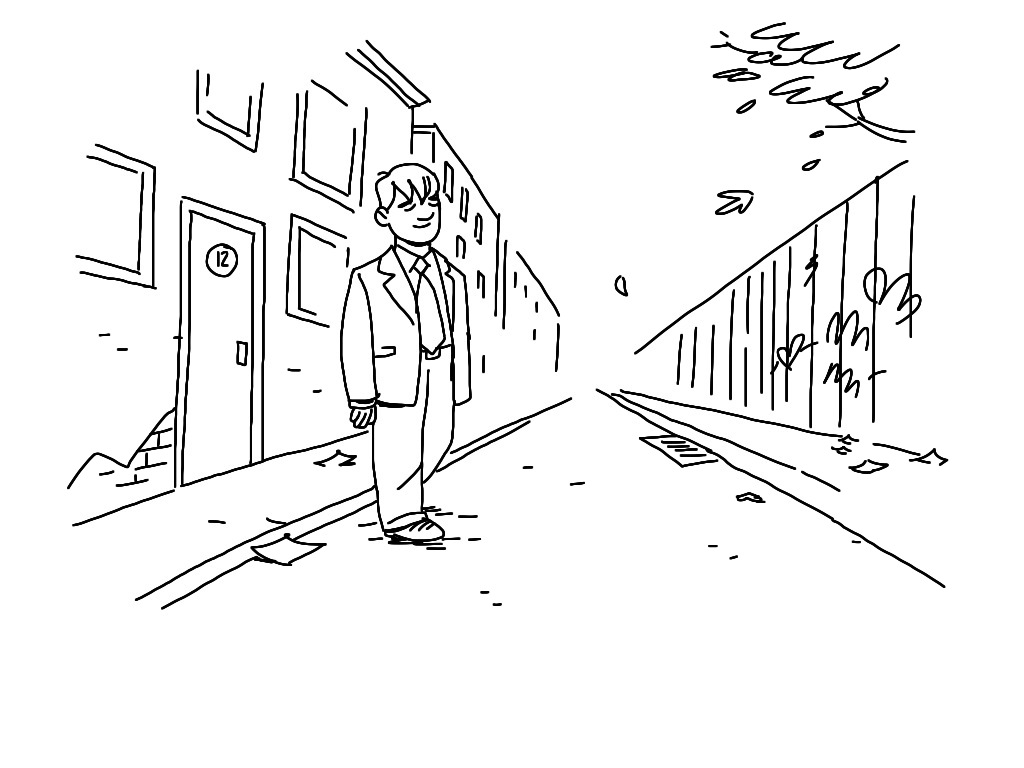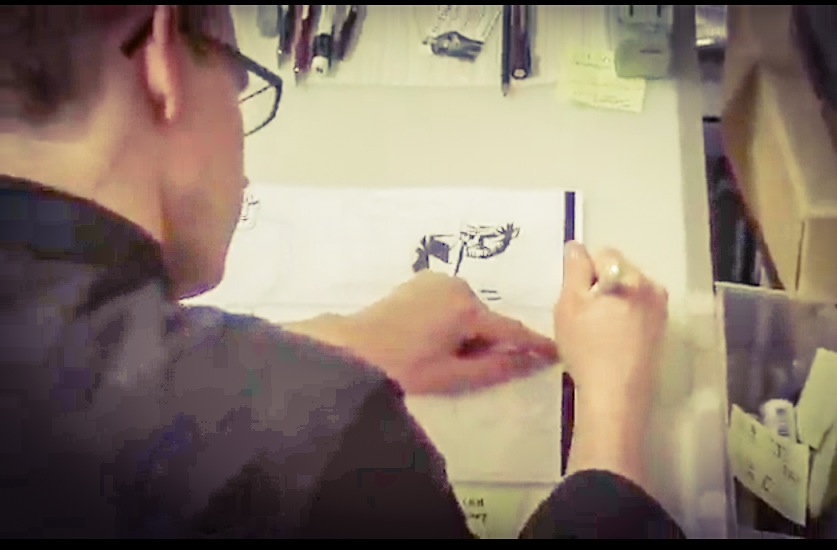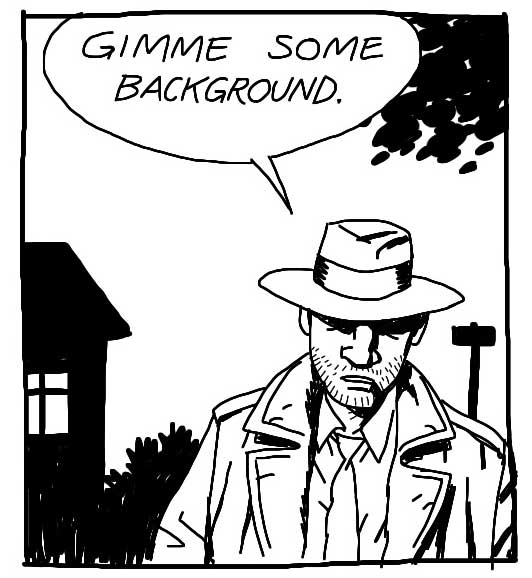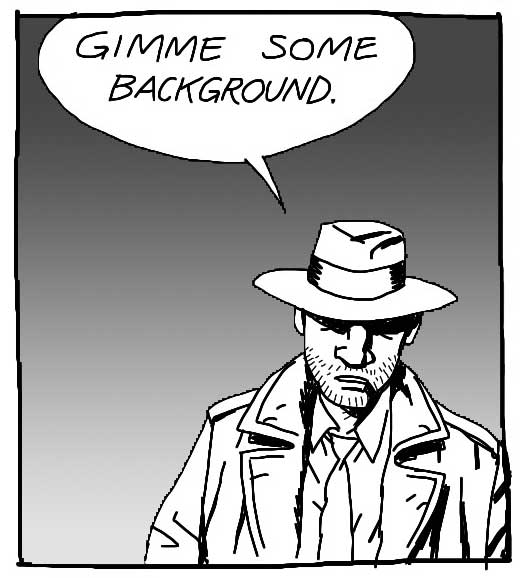I’ve just finished my work on the monthly book from BOOM!, Thomas Alsop. This video is about some of the lessons I learned working on that book – hopefully there is some value in it for you too!
art hacks
Video: How to Draw a Leather Jacket in Less Than 3 Minutes
Here is a little trick to get the job done faster, if you’re trying to draw a leather jacket. It works on other things as well!
There is an Amazon link in the resources section to the acrylic markers shown in this video.
—
Want more tips and trick like these? Make sure to sign up for the newsletter.
Bonus Vid – Sketching a page of Thomas Alsop
Another look into the my process as I sketch a page of Thomas Alsop (out now from BOOM! Studios).
For more on Thomas Alsop go to http://thomasalsop.com/.
Art tutorial: 5 ways to add some life to your drawings
Do your comics panels lie flat on the page? Struggle to make your characters more dynamic and your backgrounds more authentic? Here are 5 quick tips to making your comics come alive!
1. Wind
Yes, wind! We often forget the weather when we are making comics, but this is just another case of a little going a long way. A puddle or a snowdrift can give off the same effect and help us determine where and when we are.
2. Foreground
Put something in the foreground of your frame will make it look like there is an actual world around your characters.
3. Shadows
Same as with foreground, the shade of something that is NOT visible in the frame, will give off the illusion of a bigger environment.
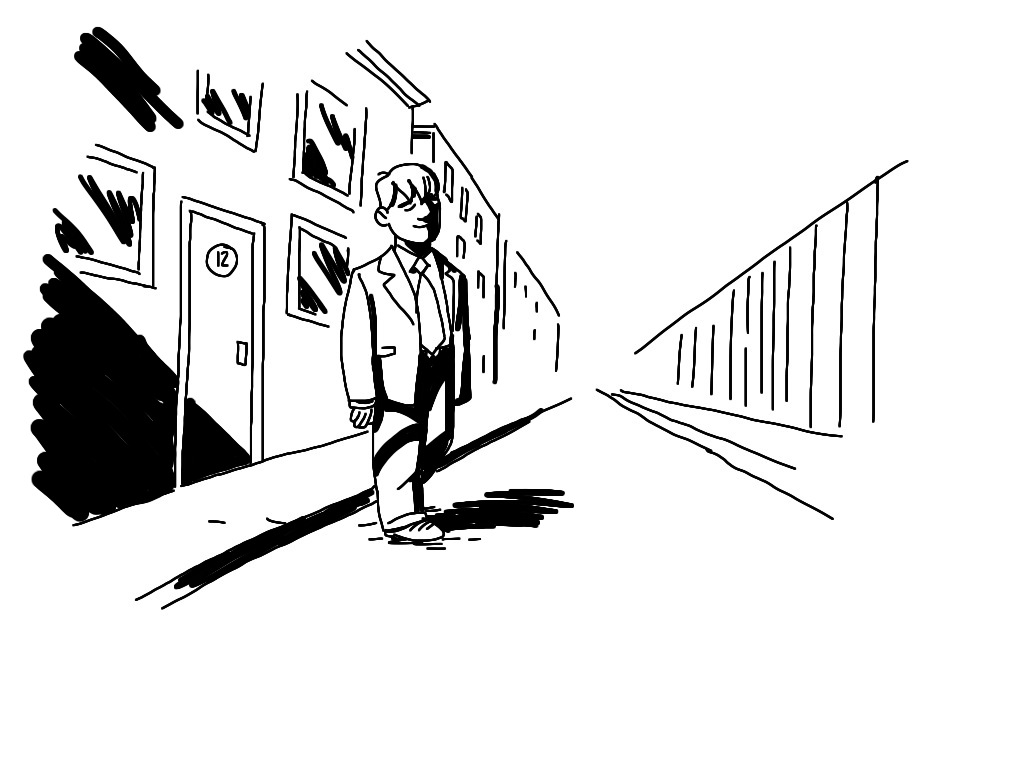
4. Tilt
If all your lines run parallel with the borders, you run risk of confusing and/or boring your reader. Tilt the image, make it seem more dynamic.
5. Trash
Put some paper scraps, dead leaves or cigarette butts in your frames to make them seem more lived in. A cracked pavement, a grafitti or some peeled paint gives the same feeling: The world exists outside this one, static image!
For more quick tips and art hacks like this, sign up to our newsletter!
Video: Tools of the Trade
Art tutorial: 5 hacks for drawing backgrounds quicker
Do you have to draw backgrounds on every panel? The short answer is no. If you start with a good establishing shot and learn these 5 hacks, you can get away with very little background drawing!
1: Structure
If you place your characters against a wall or another big surface (like the sky!), a few rightly placed lines will give the illusion that we’re still in the place you showed us in the establishing shot (usually a wide shot in the first frame to establish the room or setting we are in, who is present, where the door is, stuff like that).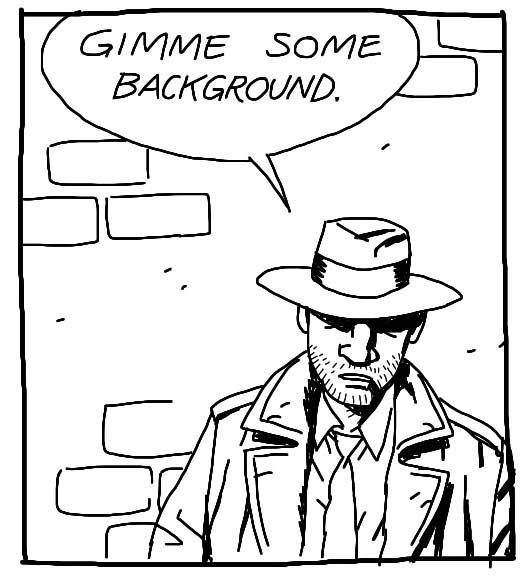
2: Silhouette
The outline of whatever is behind your characters can be quite enough – and a LOT quicker to draw! So if the scene takes place in a living room, just black out the shape of the lamp and a couch, if it takes place in the woods, black out tree trunks and leaves.
Pro tip: If you let elements poke in from the sides it lets us know there is more outside the frame. It’s a cheap trick but it works every time! Hint or show part of an object or shape and our minds will fill out the rest.
3: Shadow
Some shadows – from a window, a tree or other objects nearby – is a great way of showing us what is outside the frame while avoiding to draw it all together. Don’t try to think realistically of where the light would be coming from or how the perspective would look, just treat it as a nice shape to liven up your drawing.
4: Gradient
A color gradient – or in this case just a grayscale one – can sometimes make it out for an actual background. It’s perhaps not the most sophisticated solution, but it makes the character “pop” and that’s often all you need.
5: Riff
A “riff” is a graphic shortcut. Every artist has her own. Sometimes a riff is just some shapes/lines, not a realistic rendering of anything. Make your own riff or copy from another artist whose style resembles yours. I think I lifted this one from Mike Mignola, a brilliant background artist to steal from – because he rarely draws much and has a superb sense of graphic storytelling.
Again, you need some background, at least in one or two frames per page, so the readers know where the characters are. But once you’ve established the world around your characters, it’s OK to cheat a little on the rest of the page. And now you know how!
—
If you want to know more about background drawing and perspective, check out this episode of the Comics for Beginners course.

